IN FOCUS
Mary Glucksman profiles six new feature films in production.
BROTHER TO BROTHER
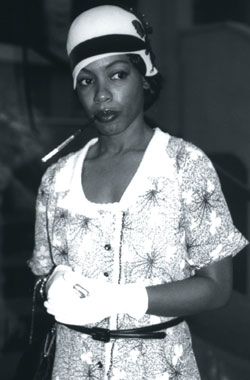 |
| PHOTO MANDANNA FONOUGH |
Called Brother to Brother, Evans’s film looks back upon the Harlem Renaissance from the perspective of an elderly writer, Bruce Nugent, who meets a young gay college student at a New York homeless shelter. “The real Nugent wrote the first published piece of black gay fiction in Fire! Magazine,” says Evans. “None of his ideas had been addressed [on film]. He was very open about being gay at a time when it was very daring to be so honest.”
Evans wants Brother to have an otherworldly quality, one reason he rejected the cost-savings of DV. “It’s uncharted territory,” says McKay. “I’ve never seen relationships like those he’s portraying or the breadth he’s giving [his movie] by having [Perry] go back in time and see everything he struggled with from another generation’s point of view. It’s difficult material but that’s what working independently is supposed to be about.”
Evans has been best known for the coming-out chronicle Close to Home, but Brother, though uncompleted, has already won one prize — the Independent Feature Project’s Gordon Parks Independent Film Screenwriting Award. And Schoof says financing for the remainder of the film could fall into place after word gets out on Julliard graduate Anthony Mackie, who plays the young gay student. (Mackie’s co-starring alongside Eminem in Curtis Hanson’s Untitled Detroit Project.) Also in the cast of Brother are Shakespearian stage actor Earle Hyman as Nugent, Aunjanue Ellis, Larry Gilliard, Duane Boutte and Alex Burns. Contact: Rodney Evans at rodneyevans@earthlink.net.
CONEY ISLAND BABY
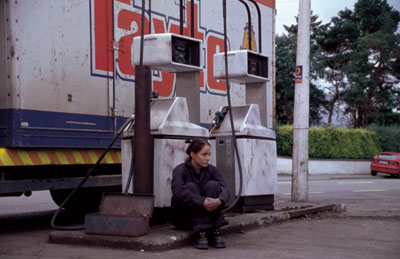 |
| PHOTO TANYA RYNO |
Amy Hobby’s been itching to direct again since she and Michael Almereyda collaborated on a 1995 festival documentary At Sundance, but her producing career kept getting in the way. Double A Films, the company Hobby launched with partner Andrew Fierberg, punches out a steady stream of indies and has two in the Sundance ’02 lineup — Secretary and 13 Conversations About One Thing.
Yet actor Karl Geary, who appeared in the Double A production of Hamlet, directed by Almereyda, solved Hobby’s dilemma by asking her to direct his screenplay, Coney Island Baby. A romantic comedy about an Irishman’s return home from New York to claim the girl he left behind, it’s loosely based on his own experiences shuttling between Dublin and New York.
“Karl came to me with [Coney] as something to produce. But it turned out I was the person who best understood his vision for it, and he asked me to direct,” says Hobby.
Coney landed on the Double A schedule with money from newcomer Frontlot Productions, but the budget wouldn’t support celluloid. “I had my reservations about digital, but [the savings] allowed me to make my film,” says Hobby. But the DV production has a visual edge most low-budgeters approach only in their dreams — Hobby landed A-list cinematographer Peter Deming (Mulholland Drive) to shoot the film, thanks to her relationship with David Lynch producer Mary Sweeney, whom she’d worked with on Almereyda’s Nadja. Geary stars alongside Hugh O’Connor and Laura Fraser. The film was shot over 18 days in August in Sligo, on Ireland’s northwest coast. Contact: Andrew Fierberg at aafilms@aol.com.
DING-A-LING-LESS
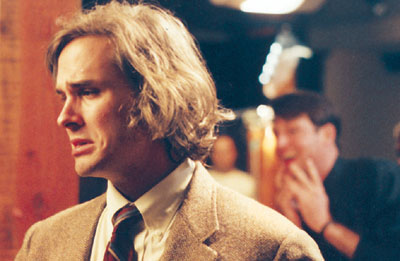 |
| PHOTO LINZIE VIVIAN |
Filmmaker Onur Tukel was stuck in financing hell when he got what he calls his “Glengarry leads” — a floppy disc with contacts for 675 former members of the fraternity he’d joined in college. A dozen bought in. That was enough for Tukel to shoot his comedy Ding-a-ling-less on 35mm with a professional crew last Christmas.
The film is about a young man going through life without a penis. You might think that smacks of the kind of schtick that gives the IFP Market a bad rap. But in the hands of 28-year-old Tukel, the story is hilarious, inspired, and even touching. Although Ding-a-ling-less has more dick jokes than a Farrelly brothers pic, it’s a professional undertaking all the way. That may be because Tukel and lead actor Kirk Wilson honed a rapport on the director’s first two features, microbudget 16mm efforts House of Pancakes and Sergio Lapel’s Drawing Blood. (Neither had fest exposure — “Neither deserved it!” says Tukel — though Pancakes got a video release, and Troma bought Blood).
So where did Tukel come up with this low-rent high concept? He was hired to write a script about a lesbian physician with post-traumatic-stress syndrome trapped in a house during a tropical storm. “I’d spent the past month writing from a 40-year-old lesbian’s point-of-view. Something deep-rooted and sexual in me had been repressed. This is what came out,” he says. Contact: Onur Tukel at onur7@earthlink.net.
HAPPY HOUR
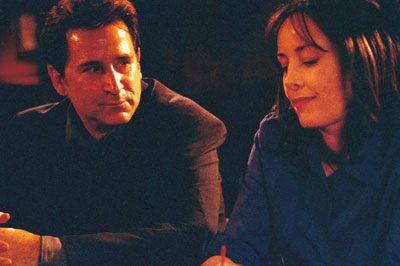 |
| PHOTO JESSICA MIGLIO |
Mike Bencivenga went to NYU so long ago one of the film students working alongside him in the equipment room was Spike Lee. But his own films weren’t as successful asLee’s 1983 Joe’s Bed-Stuy Barbershop: We Cut Heads. “My own films had great energy but lacked a refined sense of story,” he says.
After film school Bencivenga worked as an archivist for Yoko Ono, produced a Frontline doc, and wound up in TV news. He made a microbudget feature, Losers in Love, in ’93 and was writing plays and sketch comedy when an early draft of Happy Hour landed on his desk. Richard Levine’s romantic comedy centered on a tortured but brilliant alcoholic writer, Tulley; Bencivenga had known someone similar. A few suggestions later they were rewriting the script together, and Bencivenga decided to direct.
“It’s very serious, but on the surface it’s very funny. The drama lurks under the jokes, so we had a license to be as clever as we liked,” says Bencivenga. “You can use comedy to create as well as break tension.”
Happy was shot late last spring in Manhattan. Anthony LaPaglia stars as Tulley and Robert Vaughn (Man from U.N.C.L.E.) plays his father; Eric Stoltz is Tulley’s sidekick and Caroleen Feeney is the love interest. The film’s producers are Davis Classics’s J. Todd Harris and O’Hara/Klein’s Kimberly Shane O’Hara and Eric M. Klein. Contact: Kimberly Shane O’Hara at yelduck@aol.com.
THE LAST RUN
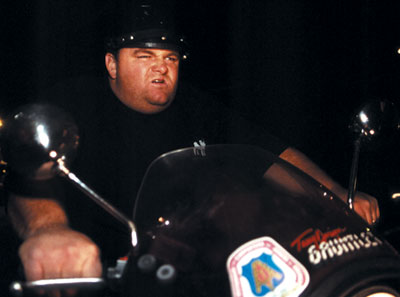 |
| PHOTO PAUL TREACY |
“I was born on a bar room floor, and I’ve spent most of my life trying to get up off it.” So begins The Last Run, a new film by Michael Carty and Colum McCann about a trio of friends struggling to break out of the insular Irish world of their hometown Bronx neighborhood. The return of an old crush inspires Sean, whose voiceover opens the film, to make a last stab at getting off drugs and alcohol. Blood loyalties, however, get in the way.
Carty and McCann are more of an odd couple than most co-directors. Carty teaches eighth grade in one of the city’s toughest South Bronx schools; McCann’s a Dublin transplant whose novels Songdogs and This Side of Brightness have earned him fame and film options; he also wrote the screenplay for the Veronica Guerrin biopic, When the Sky Falls. When Carty asked McCann to read a semi-autobiographical script he’d written, the two ended up developing it together and co-directing.
“Colum called looking for a good d.p.,” says producer Patrick McCullough. “He [told] me he [had] a great script. When a writer like Colum McCann says that, it’s all you need to know.” A veteran of decades of work for stage and screen, McCullough had just produced his first feature, the supernatural thriller The Sister, when he took on The Last Run.
The Last Run was shot in November in Harlem and Bronx neighborhoods like Woodlawn. Most of the actors are cinema newcomers; marquee names on the cast list include the brothers Frank and Malachy McCourt. Contact: Patrick McCullough at dreamnit@yahoo.com.
RODGER DODGER
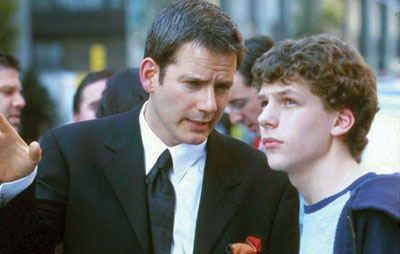 |
| PHOTO PETER FIGITAKIS |
Novice directors often put their films together with a combination of bravado and sheer obstinancy, but sometimes blind luck also plays a part. That’s how Dylan Kidd got Campbell Scott to star in Roger Dodger, his first feature.
“Dylan was in a coffee shop, and Campbell Scott walked in,” says producer Anne Chaisson. “He called me and said ‘What should I do?’ I said ‘Muster whatever courage you have and give him the script.’” Scott, who had just directed the low-budget InDigEnt pic Final, read Roger Dodger, liked it, and came on board as executive producer, helping to attract a high-wattage supporting cast that includes Isabella Rossellini, Jennifer Beals and Elizabeth Berkley.
Roger Dodger is the story of a notorious New York man-about-town whose 16-year-old nephew shows up on his doorstep looking for advice about women. When Roger takes the boy (Get Real’s Jesse Eisenberg) out to sample the city’s nightlife and demonstrate the art of the pick-up, the next 24 hours turn out to be enlightening for both.
“Ever since Campbell came on board it’s been a roller coaster ride,” says Kidd, who’s spent 10 years trying to get a break in the business since graduating from NYU. “It was like a fairy tale. I said I was going to make this film in October 2001 if I had to shoot on Pixelvision. Suddenly I’m sitting with Campbell Scott, he’s asking who I want for the roles, and then he’s calling them up!”
Roger Dodger was shot on 35mm, as was Kidd’s 1997 short Ian’s Ghost, an award-winner that has streamed on Hypnotic.com. The two films were both produced by Chaisson. Contact: Anne Chaisson at annechaisson@hotmail.com.
Filmmakers who would like to have their feature-length projects considered for IN FOCUS should contact Kevin Murphy , FILMMAKER Magazine, 104 West 29th Street, 12th Floor, NY, NY 10001. Please enclose a VHS copy and press kit. A submission form is also available via e-mail from kevin@filmmakermagazine.com
VOD CALENDAR


 See the VOD Calendar →
See the VOD Calendar →


